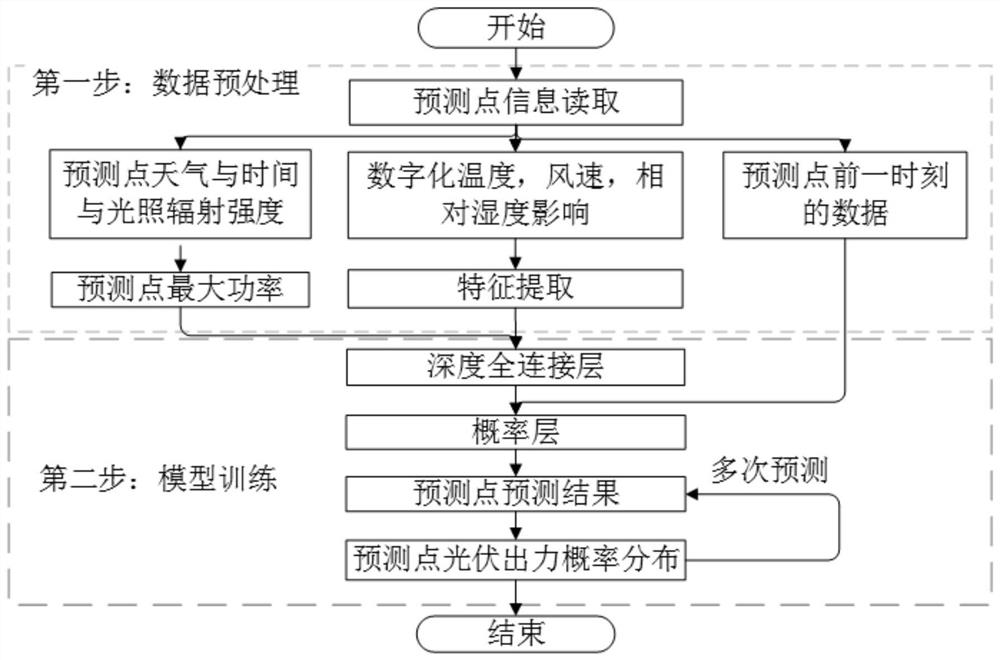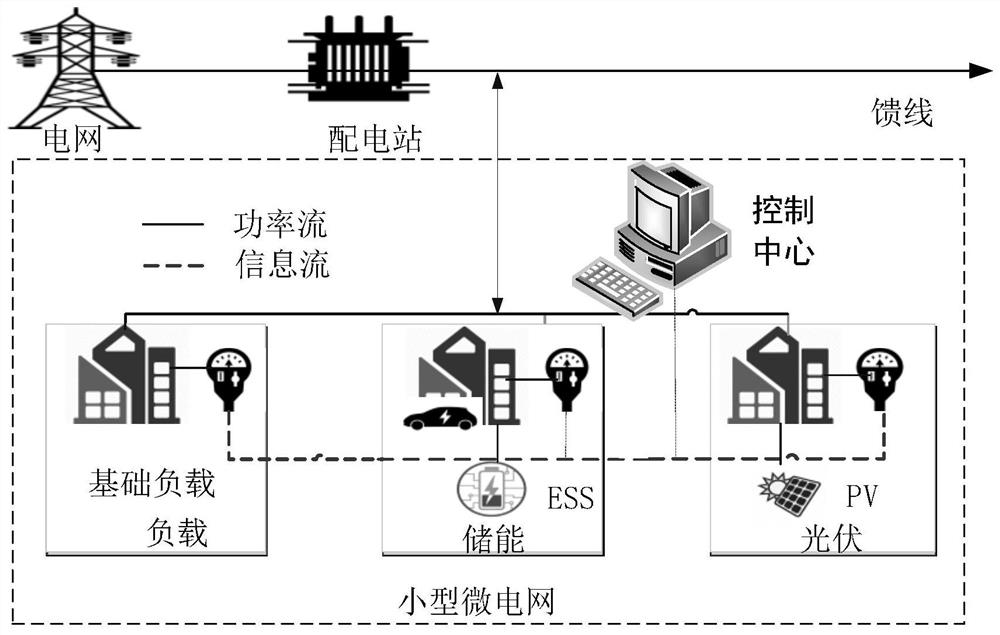Power grid energy management method and system based on deep expectation Q-learning
An energy management and learning network technology, applied in the field of power grid energy management system, can solve problems such as difficulty in obtaining the global optimal solution of nonlinear optimization models, and long time-consuming heuristic optimization algorithms.
- Summary
- Abstract
- Description
- Claims
- Application Information
AI Technical Summary
Problems solved by technology
Method used
Image
Examples
Embodiment 1
[0151] Such as figure 1 As shown, a power grid energy management method based on a double-depth expectation Q-learning network algorithm includes the following steps:
[0152] S1. Based on the Bayesian neural network, model the uncertainty of photovoltaic output at the prediction point and obtain the probability distribution of photovoltaic output;
[0153] S2. Input the probability distribution of photovoltaic output into the power grid energy management model based on the double-deep expectation Q-learning network algorithm to obtain the corresponding photovoltaic power generation output strategy;
[0154] S3. Operate each photovoltaic output device according to the photovoltaic power generation output strategy.
[0155] The further optimization scheme is that the establishment process of the power grid energy management model based on the double-deep expectation Q-learning network algorithm is:
[0156] T1. Only consider the energy storage system as a controllable resour...
Embodiment 2
[0183] This embodiment provides a power grid energy management system based on a dual-depth expected Q-learning network algorithm, including:
[0184] The probability distribution acquisition device models the uncertainty of photovoltaic output at the prediction point based on the Bayesian neural network and obtains the probability distribution of photovoltaic output;
[0185] The first modeling device only considers the energy storage system as a controllable resource, takes the lowest daily operating cost as the objective function and satisfies the operating constraints of the microgrid, and establishes a power grid energy management model;
[0186] The power grid energy management model of the second modeling device is modeled as a Markov decision process;
[0187] The solution device considers the random process of state transition, and proposes a double-depth expected Q-learning network algorithm by modifying the iterative rule of Q value on the basis of the traditional m...
Embodiment 3
[0191] The practical application of the present invention is explained by taking the photovoltaic output of a small industrial park from May to December of a certain year and the total load of the park as the basic data.
[0192] Assuming that the photovoltaic output and load power of the industrial park are as attached Figure 5 And attached Image 6 , 7 As shown, other parameters are listed in Table 1.
[0193] Table 1 Energy storage system parameters
[0194]
[0195] After many attempts, the sample storage capacity of the experience playback mechanism in the DDEQN algorithm is set to 4800, and the sampling size of each small batch is 600; the initial exploration rate is 0.1, the final exploration rate is 0.001, and the number of exploration steps is 24000; the learning rate is set to 0.001; update the target Q network parameters every 10 times of training.
[0196] Use the Python language and call the PyTorch package to write the Bayesian neural network photovoltaic...
PUM
 Login to View More
Login to View More Abstract
Description
Claims
Application Information
 Login to View More
Login to View More - R&D
- Intellectual Property
- Life Sciences
- Materials
- Tech Scout
- Unparalleled Data Quality
- Higher Quality Content
- 60% Fewer Hallucinations
Browse by: Latest US Patents, China's latest patents, Technical Efficacy Thesaurus, Application Domain, Technology Topic, Popular Technical Reports.
© 2025 PatSnap. All rights reserved.Legal|Privacy policy|Modern Slavery Act Transparency Statement|Sitemap|About US| Contact US: help@patsnap.com



